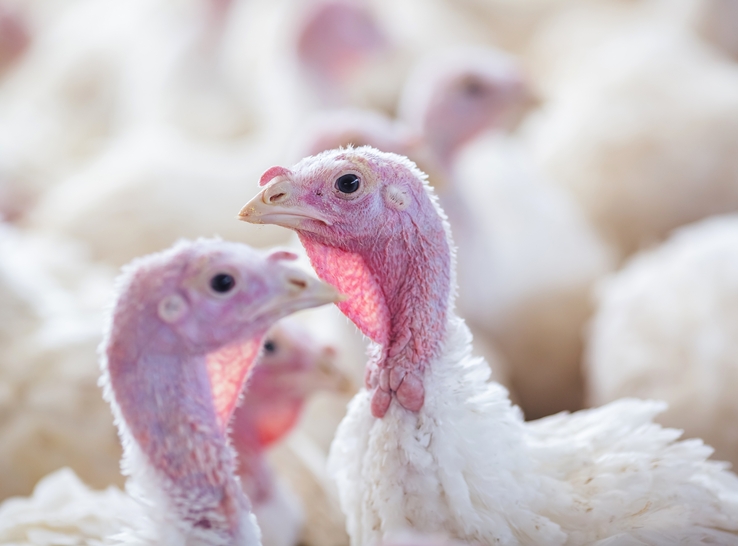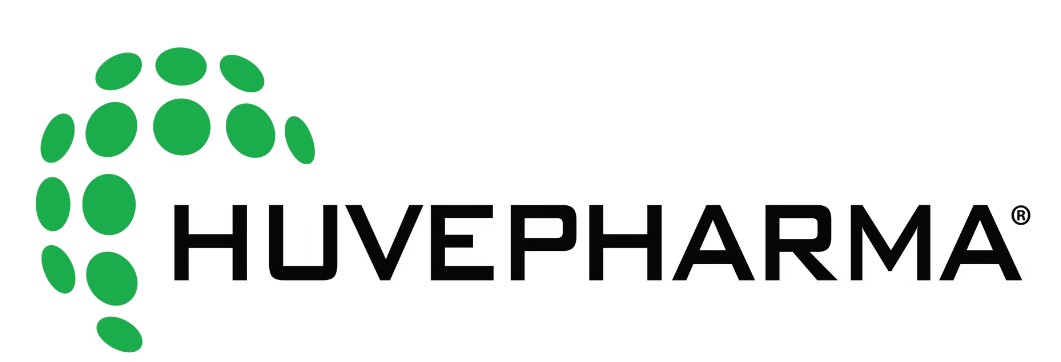A healthy gut is essential to keep young turkeys growing and productive, but enteritis is an all-too-common problem. The challenge is to identify precisely what is causing the enteritis, because viruses, bacteria, parasites, issues associated with the bird’s environment, and feed and water quality all could be at fault. Before beginning any treatment or corrective action, it’s critical to identify the causative agent(s).
In February 2023, Huvepharma’s research and development personnel received a call about enteritis symptoms in two commercial antibiotic-free turkey houses. Each single-stage grow-out house had 5,096 birds at 40 days of age. The farm was in the southeastern US.
A team went out to conduct a thorough field investigation to determine exactly what was going on with the flocks. “Whenever you have enteric issues, you have to do an in-depth investigation to identify the problem,” said Vijay Durairaj, BVSc, PhD, Huvepharma. “We didn’t know what we were going to find when we started testing. The flock had dealt with both coccidiosis and cochlosomiasis in the past.”
Multi-stage testing
The team used wet-mount examinations, histopathology and molecular diagnostics in the form of PCR testing. The gross pathology revealed pale intestines with mucoid fluids in the small intestine.
Coccidiosis frequently comes to mind with enteritis, and numerous Eimeria species can cause problems. In this case, very few Eimeria oocysts were detected in the wet-mount examination. PCR confirmed it to be E. meleagrimitis, but histopathology revealed no Eimeria-associated damage within any part of the intestine. “You have to have a threshold level of Eimeria to cause a problem, and that wasn’t the case here,” Durairaj said.
Cochlosoma anatis was also identified during the microscopic examination based on its characteristic jerky mobility and morphology. “The organism has a rounded, suction cup-like structure,” observed Steven Clark, DVM, Huvepharma. “It adheres to the sides of the villi, and in severe cases, the villi tips can become completely covered by the organism. This prevents the bird from absorbing nutrients, resulting in significant flock unevenness.”
Although C. anatis is most commonly seen in turkeys, other species of Cochlosoma such as C. picae, C. turdi and C. rostratum are also documented in avian hosts. In this clinical case, wet-mount examination identified C. anatis and PCR testing confirmed it.
“In the duodenum, dense colonization of Cochlosoma on the mucosal surface of villi was observed, in addition to free Cochlosoma organisms dispersed in the mucus. The jejunum had chronic enteritis with shortened villi and irregular tips. The small intestine had a lot of bacterial rods mixed with mucus on the sides and tips of the villi, representing dysbacteriosis,” Durairaj pointed out. It is that secondary bacterial assault that will cause additional, severe problems for the birds.
A multi-stage testing process involving in-depth field investigation with wet-mount examination followed by PCR and sequencing confirmed that C. anatis was the primary etiological agent causing enteritis in these two turkey houses.
A health checkup
Although wet-mount examinations or fecal flotation tests are helpful to identify the disease, identifying the etiological agent at the species level cannot be accomplished with these tests. “The advanced molecular tools like PCR help in identifying and confirming the Eimeria and Cochlosoma at species level,” Durairaj pointed out.
“These types of intestinal health screenings in this field study need to be done regularly on every flock so that producers have an idea of health status,” he added. “When there’s a problem, we have to go in-depth to identify the primary pathogens and any secondary pathogens involved in the disease outbreak. Based on the etiological factors, proactive measures can be taken to prevent problems in subsequent turkey flocks.”
And, while Cochlosoma is not as common as it once was, the disease may transfer to the successive flock if not addressed properly. Because there are no approved treatments or vaccines for cochlosomiasis, management techniques are key to preventing exposure. The secondary bacterial infections commonly associated with Cochlosoma present an added challenge for all flocks but particularly for antibiotic-free systems, which account for about 20% of US turkey production.
“Antibiotic-free flocks have fewer options to control enteric issues, so we tend to see more coccidiosis and cochlosomiasis challenges in those flocks,” Clark noted. “They’re just more difficult to manage.”
Focus on management
Regardless of how the turkeys are raised, the only solution to address cochlosomiasis is to focus on management. The good news is that effective biosecurity and management strategies have broad-reaching benefits for flock health and productivity.
“Over the last few years, the poultry sector has improved biosecurity to control avian influenza,” Clark said. “Consequently, we have improved a lot of other health issues as well.”
Certainly, biosecurity can help address cochlosomiasis and other enteric challenges for turkeys.
“The Cochlosoma protozoa can form a cyst, which can make cleanup difficult,” he said. “Wild birds might harbor it and continue the cycle of infection. The same for old litter left behind or moved between barns.”
Clark offered some management areas to address:
- Establish a program to control wild birds and prevent them from entering barns. Patch holes in buildings, remove any bird nests and clean up feed spills outside and inside barns.
- Manage the barn to keep litter dry and in good condition.
- Reduce bird density, if needed, to prevent crowding and stress.
- If possible, extend the turnaround time between flocks entering a facility, for example, from 1 week to 2 weeks.
- Clean brooder houses between every group.
- Monitor feed and water quality, and ensure adequate access and supply for the birds.
Young birds — 0 to 5 weeks old — are particularly vulnerable to enteric challenges because their digestive and immune systems are still developing. Take steps to ease that transition, such as warming the barn to keep birds comfortable. Acidify the drinking water or provide other enteric health supplements like copper sulfate.
Anytime there is an unexplained enteritis and unevenness in young turkey flocks, growers need to be aware that cochlosomiasis is a possibility. “We need to know how to diagnose the problem: Is it coccidiosis, cochlosomiasis or turkey coronavirus enteritis?” Clark noted. “Veterinarians need to be aware of cochlosomiasis so they can rule it out when performing necropsy and exams.”
“We understand from industry surveys that cochlosomiasis incidence is less today, but the severity can still be significant,” he said. “Don’t take it off your radar. It’s not a problem until you have it, and then it’s a big problem.”
Editor’s note: Content on Modern Poultry’s Industry Insights pages is provided and/or commissioned by our sponsors, who assume full responsibility for its accuracy and compliance.









